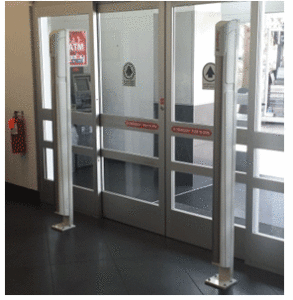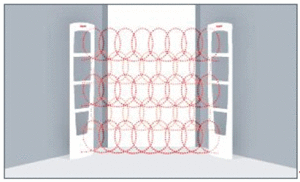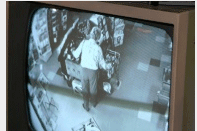 Is your burglar alarm giving you all it’s got? Technology keeps updating but there is one area you may not be thinking about getting more from your dollar: your burglar alarm system.
Is your burglar alarm giving you all it’s got? Technology keeps updating but there is one area you may not be thinking about getting more from your dollar: your burglar alarm system.
Alarm systems can now do so much more for the retailer. First, if you are still transmitting alarm signals via your phone line, then you are very vulnerable. Phone lines are really terrible for transmitting signals. They are slow and unreliable. Your phone line goes down and your alarm is not going to communicate with anyone. Change to cellular communications and you will get the signal out. You see, alarm systems communicate on a different cellular channel than your voice “can you hear me now” channel. That channel is very strong. You may not have good voice service in your store but chances are your alarm system cellular service is great. Cellular signals are MUCH faster also. Cost? Should only add a few dollars a month to your monitoring invoice.
Heard about or been a victim of copper theft. You know, copper, the metal that your roof top or side of building air conditioner units tubing is made of. Thieves will tear up your a/c just to steal that copper to sell it. This leaves your business down until replacement and repair can be completed. Your alarm company can put a sensor on your outside a/c unit that will trip your alarm, if they try to tamper with it. Cost of the part is about $70 +/-.
Do you have valuable property at your business such as equipment, artwork….. that is never to be moved or removed from the premises? Honeywell makes a wireless sensor that is about half the size of a pack of cigarettes. This sensor attaches to that item. It can be programed different ways to notify you if the item is moved or removed. This sensor is monitored by your burglar alarm system.
Your alarm company can guide you. If they don’t have a solution or don’t understand, then you should look for another vendor who can think outside the box.
 My grandparents owned a small hardware store back in the late 1950s. Back then, when my grandpa left at 5pm, he simply locked the back door, gathered his belongings and left, locking the double glass front door behind him with nothing more than a standard lock that you’d find on any home at the time. The front of the store was nothing but glass. He had cash and at least $100k worth of merchandise on the shelves. Wouldn’t it be nice if things could go back to the way they were back then? Could you imagine if you left your store this soft nowadays? Burglaries happen, and they happen often. Over the past ten years as a Regional LP manager for my company, I’ve had it happen a total of 12 times. About once a year, or so, someone, somewhere across my region, breaks into one of my stores; or at least tries to do so. We have a lot of things that we implement to prevent this from happening, so when someone is able to breach our perimeter, it’s usually caused by human error.
My grandparents owned a small hardware store back in the late 1950s. Back then, when my grandpa left at 5pm, he simply locked the back door, gathered his belongings and left, locking the double glass front door behind him with nothing more than a standard lock that you’d find on any home at the time. The front of the store was nothing but glass. He had cash and at least $100k worth of merchandise on the shelves. Wouldn’t it be nice if things could go back to the way they were back then? Could you imagine if you left your store this soft nowadays? Burglaries happen, and they happen often. Over the past ten years as a Regional LP manager for my company, I’ve had it happen a total of 12 times. About once a year, or so, someone, somewhere across my region, breaks into one of my stores; or at least tries to do so. We have a lot of things that we implement to prevent this from happening, so when someone is able to breach our perimeter, it’s usually caused by human error. It’s not too many industries where I can share two separate stories of a crook falling four stories after trying to steal. This is why I chose Loss Prevention as my career. It’s not the thrill of the chase, or the feeling I get when I close a big case; no, it’s the funny stories I get to tell!
It’s not too many industries where I can share two separate stories of a crook falling four stories after trying to steal. This is why I chose Loss Prevention as my career. It’s not the thrill of the chase, or the feeling I get when I close a big case; no, it’s the funny stories I get to tell! It was 4:30am on a Tuesday morning. My company cell phone pierced through the quiet halls of my house. At first, I didn’t get out of bed; perhaps it was a wrong number. Silence. As I doze back off, I hear the familiar tone once again. Who could be calling me and for what reason at this hour? I let it ring. I hear the chirp of the voicemail. Before I can muster the energy to get out of bed, I hear my personal phone ringing. This one is next to me on the night stand. Something is wrong, I immediately think to myself. When I reach for my phone in the middle of the dark room, eyes still blurry, I see the caller ID. It’s a sheriff’s deputy that I’m good friends with. My heart is in my throat as I answer. “You’re morning crew was just robbed at gunpoint. Get to the store now.”
It was 4:30am on a Tuesday morning. My company cell phone pierced through the quiet halls of my house. At first, I didn’t get out of bed; perhaps it was a wrong number. Silence. As I doze back off, I hear the familiar tone once again. Who could be calling me and for what reason at this hour? I let it ring. I hear the chirp of the voicemail. Before I can muster the energy to get out of bed, I hear my personal phone ringing. This one is next to me on the night stand. Something is wrong, I immediately think to myself. When I reach for my phone in the middle of the dark room, eyes still blurry, I see the caller ID. It’s a sheriff’s deputy that I’m good friends with. My heart is in my throat as I answer. “You’re morning crew was just robbed at gunpoint. Get to the store now.”
 EAS is great isn’t it? For the most part, if someone is stealing product “X,” you slap on a quick tag or label and you see a pretty substantial reduction in shrink (for the most part.… Live in the real world). As my LP career has progressed over the years, I’ve seen EAS change drastically. I’ve also seen what retailers apply EAS tags to change as well. Often times, I scratch my head in disbelief at the ideas that come out sometimes and others, I pull my hair out because we could have been more proactive with tag placement. I’ve also seen some fantastic ideas from my store teams on some not so standard tagging procedures.
EAS is great isn’t it? For the most part, if someone is stealing product “X,” you slap on a quick tag or label and you see a pretty substantial reduction in shrink (for the most part.… Live in the real world). As my LP career has progressed over the years, I’ve seen EAS change drastically. I’ve also seen what retailers apply EAS tags to change as well. Often times, I scratch my head in disbelief at the ideas that come out sometimes and others, I pull my hair out because we could have been more proactive with tag placement. I’ve also seen some fantastic ideas from my store teams on some not so standard tagging procedures. Often overlooked for small businesses is the dire need for a suitable burglar alarm system. I talk about EAS placement and CCTV all the time. Those are rendered absolutely useless is someone busts in through the back door. If your burglar system isn’t up to standards, you run the risk of losing everything.
Often overlooked for small businesses is the dire need for a suitable burglar alarm system. I talk about EAS placement and CCTV all the time. Those are rendered absolutely useless is someone busts in through the back door. If your burglar system isn’t up to standards, you run the risk of losing everything. In the UK the number of women apprehended for shoplifting has increased, and has been linked to the fact that they do no longer get government benefits. In the United States shoplifting has increased with millions of dollars lost due to shoplifting every year, and the increase in prices has led many thieves to shoplift items that were unthinkable not too long ago. With the increase of beef prices for example, the number of thieves stealing package meat has reached an all time high. Stores across the country are even considering putting anti-theft packaging on their meat products to prevent thieves from shoplifting it.
In the UK the number of women apprehended for shoplifting has increased, and has been linked to the fact that they do no longer get government benefits. In the United States shoplifting has increased with millions of dollars lost due to shoplifting every year, and the increase in prices has led many thieves to shoplift items that were unthinkable not too long ago. With the increase of beef prices for example, the number of thieves stealing package meat has reached an all time high. Stores across the country are even considering putting anti-theft packaging on their meat products to prevent thieves from shoplifting it.
